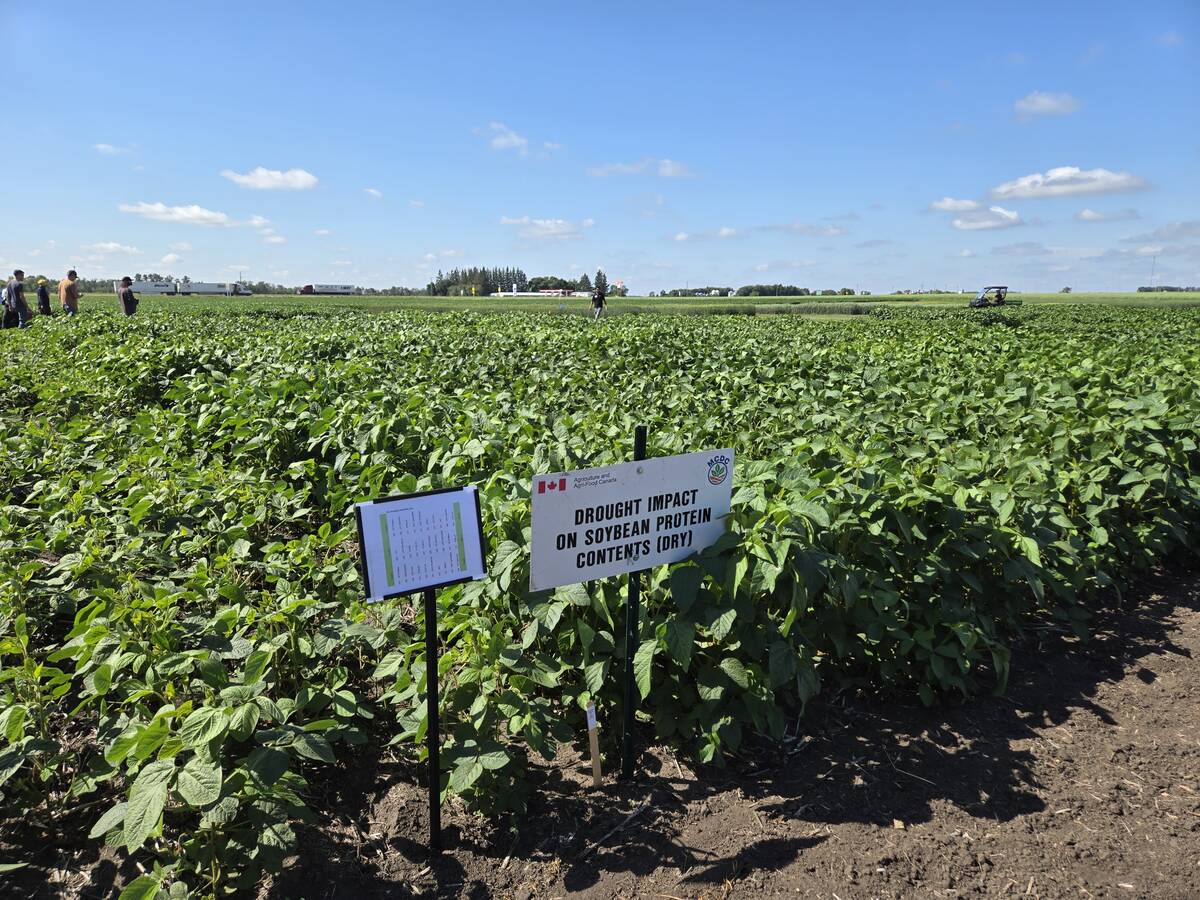A farmer’s most valuable piece of equipment could be on his hip, says the head of a farm-related communications company.
Peter Gredig is talking about smart phones: cellular phones with web browsing, e-mail capability and built-in cameras.
Blackberries and iPhones, two of the more popular brands, have long been seen in the hands of urban technophiles, but the devices have now migrated to rural areas as network coverage improves.
“Most producers start with the idea that they’re going to use it for e-mail and prices and weather,” said Gredig, president of Kettle Creek Communications who also farms near London, Ont.
Read Also

Carberry field day looks for agriculture solutions
Manitoba farmers explored research solutions for resilient crops, perpetual agronomic issues and new kinds of agricultural products at a field day at the Manitoba Crop Diversification Centre in Carberry on Aug. 6.
“I think the best payback for any device on the farm is going to be with the smart phone if you use it just for those things. But there’s just so many other things you can do with them.”
Gredig envisions farmers using smart phones to take photos of unfamiliar weeds, e-mailing the photos to an agrologist and receiving near-instant feedback, rather than making a trip or waiting for someone to visit.
The Canola Council of Canada this year introduced what it called Grow Canada 2.015, a system using web technology and social media platforms to deliver just in time agronomic information, research results and agronomic updates to canola growers. The system will enable farmers to interact with virtual agronomists for immediate, customized information.
As smart phone technology improves, farmers could also use it to monitor equipment.
Apps are the latest development in smart phones.
These third-party generated programs started as entertainment but have evolved to include more useful applications.
Apps now allow producers to monitor grain and livestock prices and to calculate herbicide rates, whether they are waiting at a grain elevator or waiting to pick up parts.
Gredig said this is a valuable function because it turns down time into profitable time.
One disadvantage with smart phones is their lack of durability.
Gredig said he has gone through several phones as they have been dropped, filled with dust or crushed under tractors. However, a variety of protective cases are available.
They can also be expensive.
Prices range from free to $200 if buyers sign a one to three year contract, but the latest version of the iPhone or Research In Motion’s latest product, the Blackberry Torch, costs around $600 when bought without a contract.
Canada is among world leaders in adopting smart phones and expanding high-speed networks that allow smart phones to operate, said Marc Choma of the Canadian Wireless Telecommunications Association.
He said the vast distances separating many Canadians are the main reason for this rapid adoption.
Canada has a higher percentage of smart phone users than Japan or Germany, he added.
Choma said there is no smart phone use data specific to farmers and rural Canadians.
However, trends in the general population would indicate that more producers will upgrade to smart phones as their contracts come up for renewal.
A farmer survey by the canola council found smart phone use is expected to grow from less than 20 percent to 30 percent in the next year, representing more than five million acres of production.
POWER OF APPS
Apps and mobile sites related to farming include:
•Producermobile. com, The Western Producer’s mobile website, offers market information and analysis, news and weather. Producermobile. com
•DuPont Crop Protection’s TankMix App provides basic math calculations for the amount of product and water needed per tank or area. Available through Apple’s app store for free
•SmartCow Mobile helps keep track of all dairy cow information, such as days in milk, pregnancy, reproduction, and days bred. www.smartcowsystems.ca














